DPMS Gen 1 vs Gen 2: 6-Parameter Based Comparison Guide
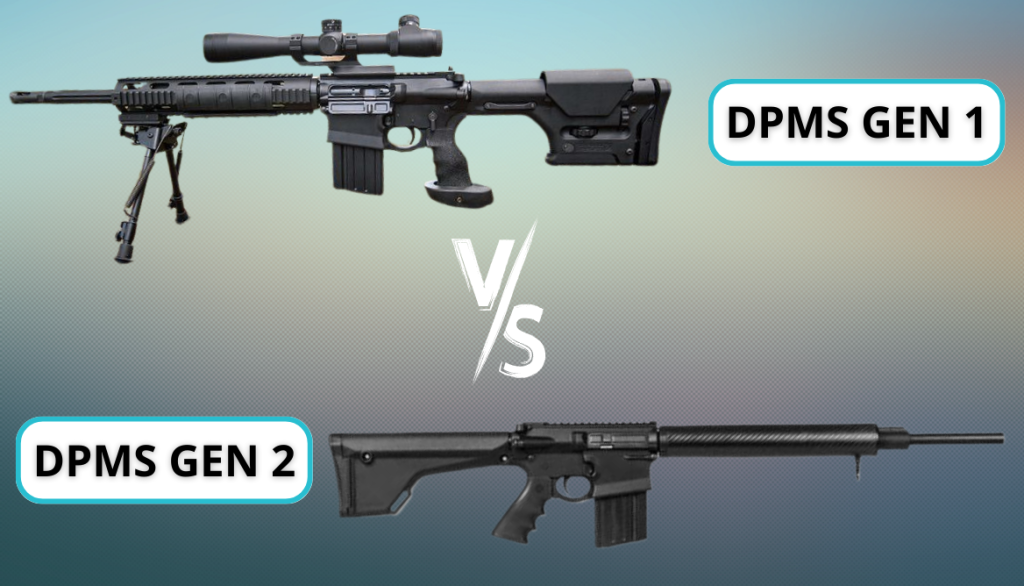
If you find yourself uncertain about the disparities between DPMS Gen 1 vs Gen 2, worry not. This comprehensive comparison guide is here to help you choose the optimal gun.
Read on to learn about the similarities and differences between both models and decide which one to get. Let’s start exploring!
DPMS Gen 1 vs Gen 2
When it comes to DPMS, Gen I and Gen II models capture the attention of firearm enthusiasts. Both versions offer unique features and characteristics that cater to different needs and preferences. Here is a closer look at both the models:

DPMS Gen I
The DPMS Gen I rifle, also known as the oracle has become a popular choice among shooters. Renowned for its ruggedness and reliability, the Gen I features a sturdy construction that can withstand harsh conditions.
- It boasts a mil-spec forged 7075-T6 aluminum receiver for excellent durability.
- With its straightforward design, the Gen 1 offers a user-friendly experience. It makes it an ideal choice for beginners and those seeking a reliable, no-frills option.
- The Gen 1 is often lauded for its affordability, making it accessible to a wide range of users.
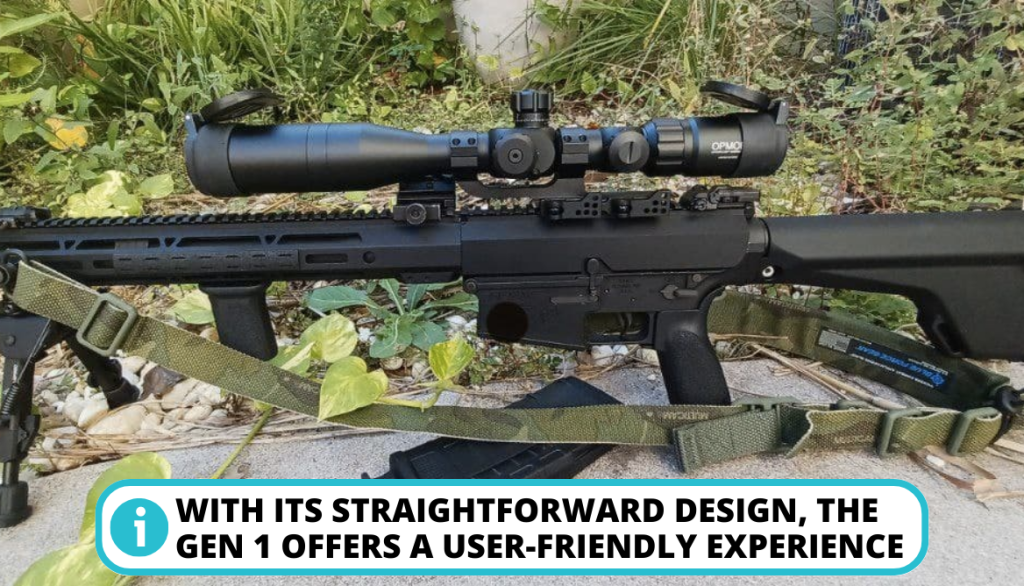
DPMS Gen II
The DPMS Gen II rifle takes the foundation laid by the Gen 1 and introduces several enhancements. The Gen 2 model focuses on improving ergonomics, reducing weight, and enhancing overall performance.
- It features a lightweight design, incorporating a 7075-T6 aluminum upper and lower receiver.
- The Gen II utilizes a unique bolt group for a more compact design and reduced recoil.
- This model also offers enhanced modularity, allowing shooters to customize and tailor the rifle to their needs.
- The Gen II is well-regarded for its improved accuracy and maneuverability.

More in-depth analysis of both DPMS-style rifles will be discussed in this article. Here is a table comparing both guns:
Features | DPMS Gen 1 | DPMS Gen 2 |
Profile: | High | Low |
Receiver: | Mil-spec forged 7075-T6 Aluminum | Lightweight 7075-T6 Aluminum |
Weight: | Varies by model | Varies by model |
Bolt Carrier Group: | Traditional | Enhanced Design |
Modularity: | Limited | Enhanced |
Recoil: | Moderate | Reduced |
Ergonomics: | Standard | Improved |
Accuracy: | Reliable | Enhanced |
Price: | Affordable | Moderate |
DPMS Gen 1 Profile: High or Low
When comparing DPMS Gen 1 and Gen 2 rifles, it’s important to note the distinction between high and low-profile upper receivers. Let’s examine the characteristics of each:
High Profile
The Gen 1 rifle features a high-profile upper receiver:
- It typically comes with a forward assist assembly.
- These older model uppers are not universally compatible with all brands of lower receivers.
- They have an increased rail height.
- It can present challenges when mounting certain optics.
Low Profile
On the other hand, the Gen 2 rifle showcases a low-profile upper receiver:
- This is the newer and more contemporary version of the 308 upper receiver.
- It is commonly referred to as DPMS style compatible.
- The low profile design offers a shorter top rail height.
- It provides greater flexibility when mounting optics. It also delivers a sleek and modern aesthetic.
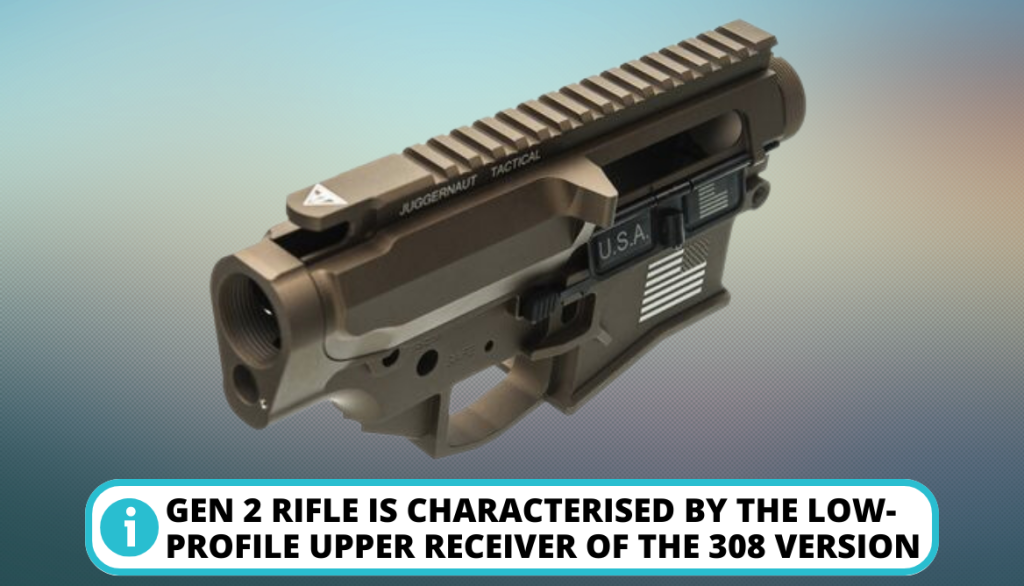
Shared Features Between the Gen 1 and Gen 2
Listed below are some of the resemblances between the duo:
1. Gas-Operated System
Both rifles employ a gas-operated mechanism:
- It ensures reliable cycling and optimal performance.
- This system harnesses the energy generated by the propellant gases to operate the firearm’s action.
- It results in a consistent and smooth operation.

2. Rotating Bolt
DPMS Gen 1 and Gen 2 rifles utilize a rotating bolt mechanism. The rotating bolt design enhances lockup strength and improves the overall accuracy and durability of the firearm.
3. Direct Impingement System
Both rifle models incorporate a direct impingement system. The propellant gases are directed into the receiver to cycle the action. This procedure provides a direct transfer of energy and contributes to reliable functioning.

4. Chambering
The rifles are chambered in .223 Remington/5.56 NATO, offering versatility in ammunition selection. This chambering is widely available and popular among shooters.
5. Barrel Extension
Both feature a 16-inch barrel, providing a balance between maneuverability and accuracy. This barrel extension is suitable for various shooting applications whether it’s close-quarters or long-range combat.
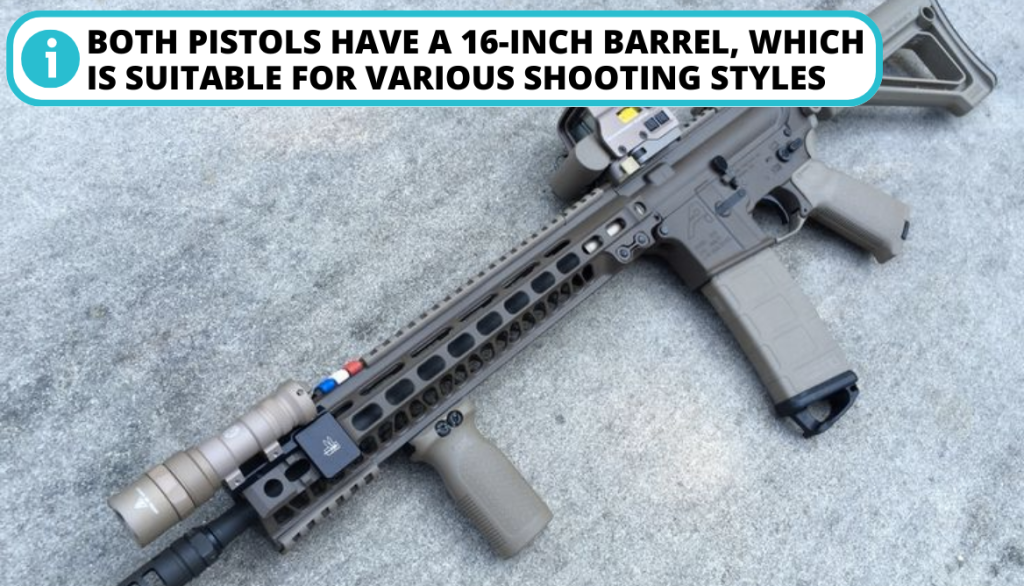
6. Picatinny Rail and Adjustable Stock
DPMS gen rifles come with a Picatinny rail. It allows for easy attachment of optics and other accessories. Both models feature a stock that you can adjust in 6 positions. It enables shooters to tailor the rifle’s length of pull for optimal comfort.
6 Differences That Set Them Apart
There are quite a few differences between the two rifles. Let’s explore these distinctions further to gain a comprehensive understanding:
1. Design
The first model features an impingement gas system, A2 handguard, buttstock, and flash hider. It offers simplicity and reliability.
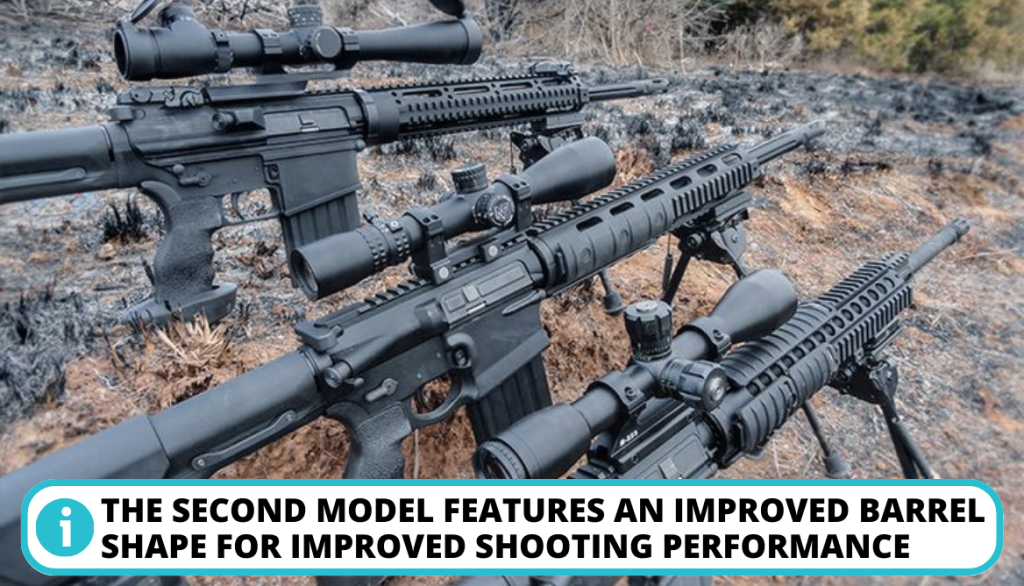
The next model introduces a better shape for enhanced performance. You get a longer barrel length. The barrel is free floating and reduces heat transfer. It has a piston-driven system. Buttstock is collapsable and there is a muzzle break for reducing recoil.
Winner: There is no winner in this category. The original prioritizes simplicity and reliability. The next model incorporates design changes for increased handling. Choose the one that suits your needs.
2. Performance
The Gen I has a 16″ barrel and a six-position collapsible stock. It is chambered for:
- .223 Remington
- 5.56 NATO rounds.
Comes equipped with an A2-style flash suppressor and a mil-spec trigger.
The Gen 2 has the same specifications but it is a bit heavier at 8.5 pounds. The Gen 1 rifle is highly favored by shooters due to its lightweight design. It offers improved accuracy and maneuverability compared to the Gen 2 rifle.
Winner: The Gen 1 rifle stands tall in this category. The performance is the same on both models but the Gen 1 is more easy to carry and shoot.
3. Accuracy
Accuracy is pretty much the same on both. 600 yards in the max range. The newer model has certain features that contribute to enhanced accuracy. The barrel is heavy and the sight radius is longer.
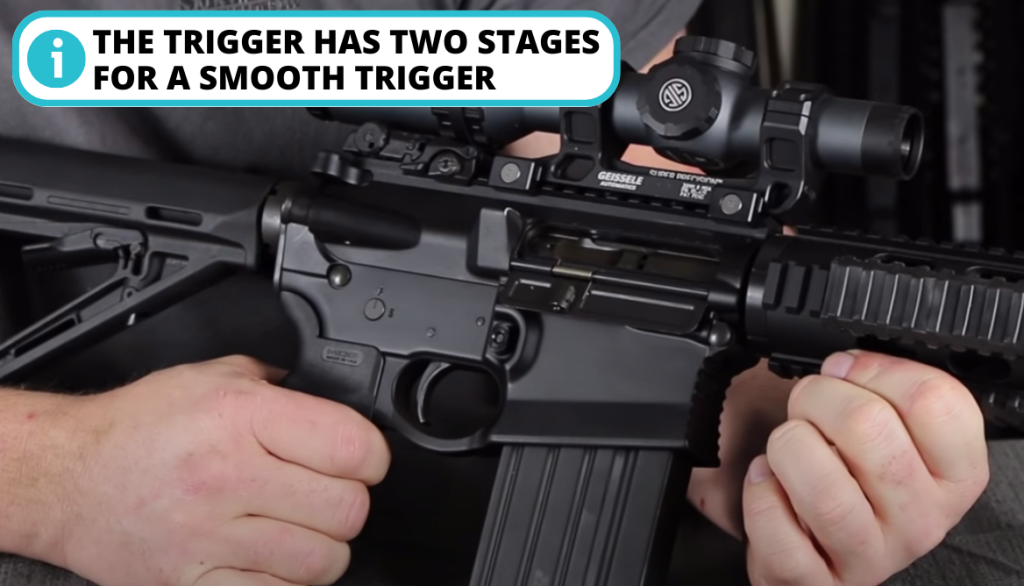
The trigger has two stages for a smooth trigger. When using proper shooting techniques, you can achieve an accuracy of 1 MOA.
Winner: The next-gen model is the superior choice if you are looking to get the best accuracy.
4. Price
The first model typically falls within the price range of $600 to $800. You can get the newer model between $800 and $1,200. Keep in mind that the price varies according to the specifics of the gun.
Winner: The original model is the obvious winner as it is much cheaper.
5. Durability
Both are constructed with forged aluminum receivers. The finish is anodized for a more durable finish. You get a chrome-lined barrel. Steel is used for making bolt carriers.

The future model has further enhanced durability and reliability compared to the original ones. The receiver is much stronger. There are also improvements in the trigger. The gas system is also upgraded for enhanced reliability.
Winner: While both guns are durable, the Gen II is the winner in this category being a more durable and long-lasting firearm.
6. Availability
There are various calibers and configurations of both rifles. Their popularity stems from their versatility and suitability for various shooting activities like sports, hunting, and home defense.
Winner: We will call it a draw as both are readily available in the market.
Final Verdict – Which is the Better Overall?
Selecting between the two rifles is not easy. The decision ultimately depends on one’s requirements. Consider the following when choosing any of the rifles:
Why Choose DPMS Gen 1?
Listed below are the reasons to go for Gen I:

- Lightweight Design: The Gen 1 rifle’s lightweight construction makes it highly maneuverable and easy to handle. It is ideal for situations that demand agility and quick target acquisition.
- Lower Price Point: It generally comes at a more affordable price range. It offers budget-conscious shooters an opportunity to own a reliable and accurate firearm without breaking the bank.
- Simplicity and Reliability: With its traditional direct impingement gas system, Gen 1 rifles offer a straightforward and reliable operation.
Why Pick DPMS Gen 2?
Here’s why you should opt for Gen II:
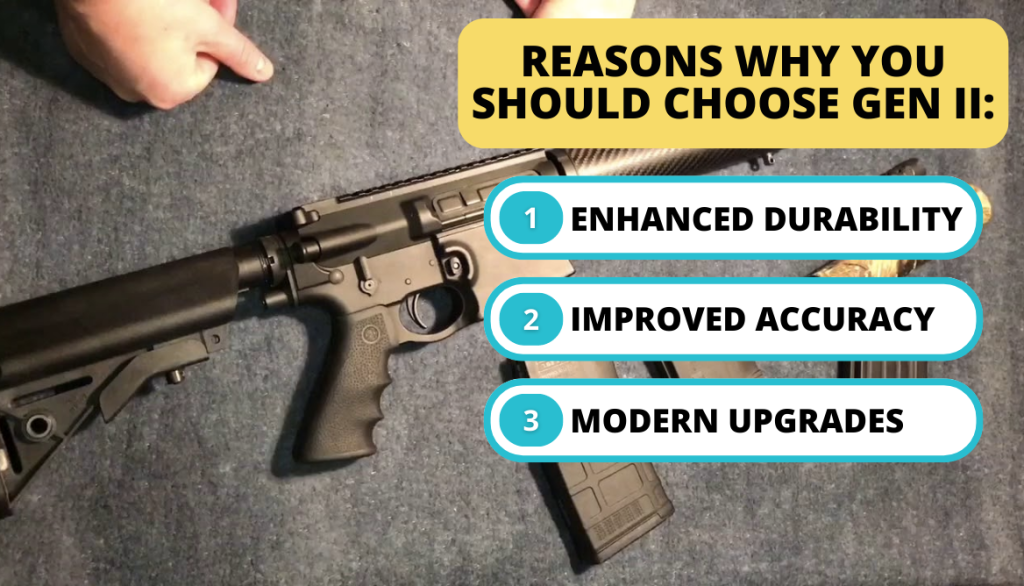
- Enhanced Durability: It incorporates design improvements that enhance durability, including a stronger upper receiver, a better bolt group, and an anodized finish. These features contribute to increased longevity.
- Improved Accuracy: The barrel is heavy and the sight radius is longer. It gives you more accuracy. The trigger is two-staged and further enhances consistency and precision.
- Modern Upgrades: The Gen 2 rifle offers a better gas system and better design. You get a really advanced firearm with all modern features. It is suitable for those who seek cutting-edge features and performance.
Important Considerations Before Choosing a Rifle
These are the factors that you should always consider:
- Purpose: Consider the intended use of the rifle, such as hunting, sport shooting, or self-defense.
- Caliber: Evaluate the appropriate caliber for your intended shooting activities and the availability of ammunition.
- Ergonomics: Assess the rifle’s comfort, handling, and suitability for your shooting style.
- Accuracy: Look for a rifle with good accuracy and consider any features that contribute to improved precision.
- Budget: Determine your budget range and find a rifle that offers the desired features within that range.
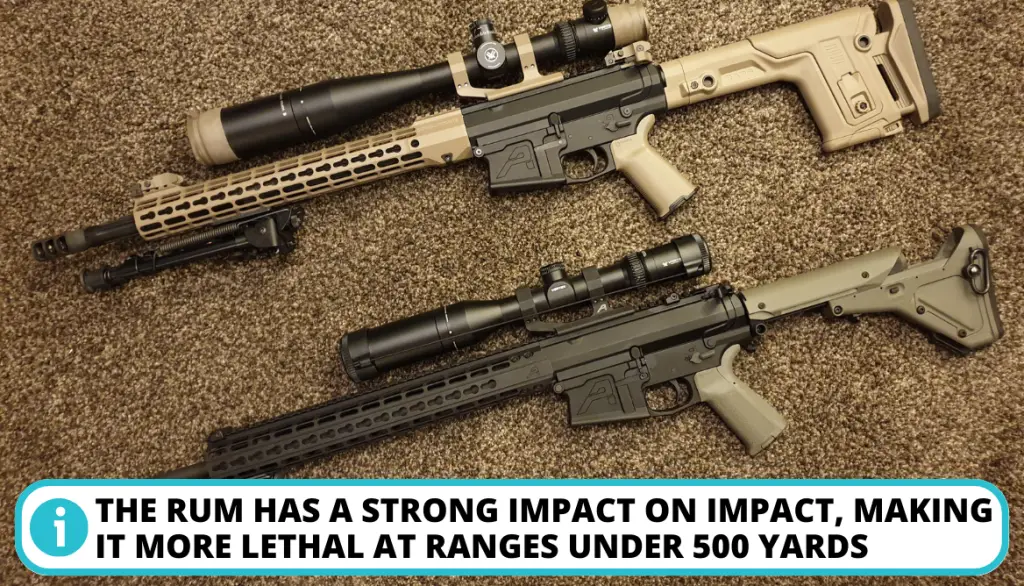
FAQ
Are DPMS/Magpul magazines the same as GEN1?
No, DPMS/Magpul magazines are not the same as GEN1. They are different in terms of design and compatibility.
What is the difference between DPMS high and low?
The main difference between DPMS high and low is the height of the top rail on the receiver. The high profile has a taller top rail, while the low profile has a shorter top rail.
Should I get a Gen 1 or Gen 2?
Choosing between Gen 1 and Gen 2 depends on your specific needs and preferences. If you prioritize lightweight design and affordability, go for Gen 1. If you value enhanced durability, improved accuracy, and modern upgrades, consider Gen 2.
Is the GEN 2 better than the Gen 1?
The Gen 2 offers improved durability, enhanced accuracy features, and modern upgrades compared to the Gen 1. It makes it a favorable choice for those seeking advanced performance. However, suitability depends on individual preferences and specific requirements.
Conclusion
The comparison between the two rifles reveals interesting details. Gen 1 is more suited to people who want something that is straightforward, easy to use, and cheap. But if you want improved durability, better accuracy, and more advanced features, Gen 2 is the way to go.
Making a choice between the two ultimately boils down to personal preference and shooting needs. The final say is that both are worth the money!
Which one of these guns did you like the most and why? Share your favorite in the comments down below!
